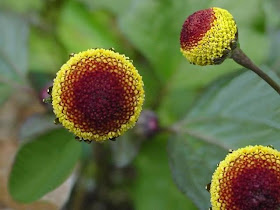Herbs or herbal medicines have gained considerable popularity as an alternative treatment for alleviating a number of health problems including heart diseases, diabetes, high blood pressure and even certain types of cancer. However, various studies and researches have highlighted the possible side effects of several herbs, if taken in excessive amounts or in combination with some conventional medicines. Though it is not possible to discuss the side effects of every herb in this article, here is an account of a few important adverse impacts of some commonly used herbs.
Side Effects of Herbs
 |
| Side Effects of Herbs |
Though, nobody can question the health benefits of herbs and their efficacy in controlling and preventing a number of ailments, many studies have revealed that their excessive use can have severe side effects. Angelica, garlic, goldenseal, ginseng, chamomile and gingko are some of the most commonly used herbs that can inhibit blood clotting. So, if you have any disorder associated with blood clotting, then you should not take these herbs without consulting a physician. Besides this, people who are taking anticoagulant drugs like aspirin and warfarin, for preventing the formation of blood clots inside the arteries, need to be more vigilant. This is because, these herbs have the same effect as that of warfarin or aspirin and therefore can increase the risk of bleeding. This can lead to serious conditions, especially if taken after surgery.
People with the autoimmune disorder should also be careful while taking herbal medicines. Autoimmune disorders are usually treated with immunosuppressant drugs that suppresses the immune system. On the other hand, herbs like echinacea (a Chinese herb) and goldenseal, have a stimulating effect on the immune system and hence, can counteract the effects of these medications. Herbal laxatives like senna, used for inducing regular bowel movement, can also have adverse effects on the health. If senna is taken for over a long period, it can cause chronic diarrhea, muscle weakness, irregular heart rhythm and damage to the kidneys and liver.
Besides these, many of the herbs such as aloe, garlic, green tea, etc, used in the treatment of several diseases, can produce allergic reactions. Green tea contains caffeine, an excessive intake of which, is associated with anxiety, irritability, insomnia and nervousness.
Comfrey is another popular herb that has been used to relieve a number of disorders like indigestion, stomach and bowel problems, thyroid disorders, hernia, cough, lung problems, hemorrhage and even cancer. However, some recent studies have shown that the consumption of comfrey can be dangerous, as it contains a compound, known as pyrrolizidine alkaloid (PA), which is hepatotoxic and carcinogenic. Accumulation of pyrrolizidine in the body can cause blockage of the hepatic vein and liver failure.
Licorice is widely used in making candies and also in treating many diseases including colds, sore throats, bronchitis, allergies, irritable bowel syndrome and even tuberculosis. But, an excess consumption of licorice candies has been found to be harmful for the liver and cardiovascular system. Over-consumption of licorice causes hypertension and oedema and is particularly not recommended for people with hypertension and kidney problems.
So, we can summarize that like conventional medications, herbs also have side effects. Therefore, herbs should be used carefully and in moderate amounts for medicinal purposes. In addition to this, it is equally important to consult your physician regarding the benefits and side effects of herbs, to avoid any serious consequences that can arise from the over consumption of herbs and herbal medicines.














